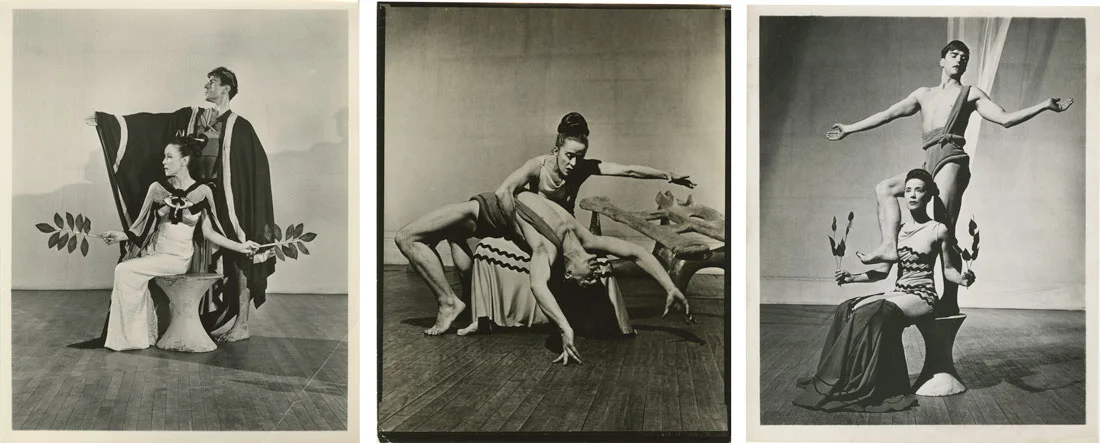In Marble and Lava: The Sets of Isamu Noguchi
Promotional images for Night Journey, photographer unknown. Images owned by the Martha Graham Dance Company.
The role of the artist is often a lonely one, full of rejection, self-doubt and alienation. Sometimes, however, you find a collaborator that inspires you in ways you never even dreamed of. Such was the case between the legendary dancer Martha Graham and the Japanese-American sculptor Isamu Noguchi, who came together in 1947 to create the mystical dance Night Journey.
A founder of the modern dance movement in New York City, Graham was known for choreographing physically intense works that expressed primal, raw emotions. In 1935 she began working with Noguchi, who shared her fascination with mythology and stripped-down performance. As a furniture designer and sculptor by trade, Noguchi created stark, primeval sets made from harsh organic forms. While Graham’s choreography expressed the joy and agony of human life, Noguchi’s sculptures set the raw landscape of that emotional turmoil. Night Journey is the culminating jewel of their partnership, combining dance and design to tell a story of passion and despair.
Based on the Sophocles play Oedipus Rex, the piece showcases the moment when Jocasta, queen of Thebes, learns that her husband Oedipus is actually her own son. Graham choreographs the dance from the queen’s point of view, focusing on her torment and guilt at the discovery of this break with the natural order. More than an interpretation of a greek myth, Night Journey explores the difference between primal desire and sin, showing that it is with the introduction of knowledge that desire becomes shame.
For this piece, Noguchi designed a series of decorative pedestals and a concrete marital bed where Jocasta dances with Oedipus. Made of two humanlike forms connected by outstretched arms, the bed manages to express both organic sexuality and harsh discomfort. Slabs of hard concrete stand jagged, looking more like a torture device than a marital bed.
Noguchi's rough, brutalist sculpture reflects the beauty and cruelty of the lovers’ fate. The piece is unmistakably raw, defiant of the marbled, smooth model of classical sculpture in ancient Greece. The characters of Oediups and Jocasta, living as kings in the myth, would have lived out their fate in a bed of marble and silk; in this interpretation they are bound to a slab of rock that looks about as comfortable as a pool of cooled lava. It’s not surprising, then, that by the end of the dance Oedipus is blind and banished and Jocasta lays dead at her own hand. Though they didn’t realize it at first, their ominous surroundings had prophesied their doom from the beginning.
Primal expression remained a common interest for Noguchi and Graham, who would go on to collaborate on over twenty sets together. Their prolific relationship stemmed from a deep respect and understanding of each other’s methods. To Noguchi, Graham “used the sets as extensions of her own anatomy,” often incorporating them into her choreography. Likewise Graham said, “Without Isamu Nochuchi, I could have done nothing… always he has given me something that lived on stage as another dancer.”
Watch a clip of the Martha Graham company dancing in a 1960 filmed production of "Night Journey" featuring Noguchi's sets.
WORDS BY MAGALI ROMAN


